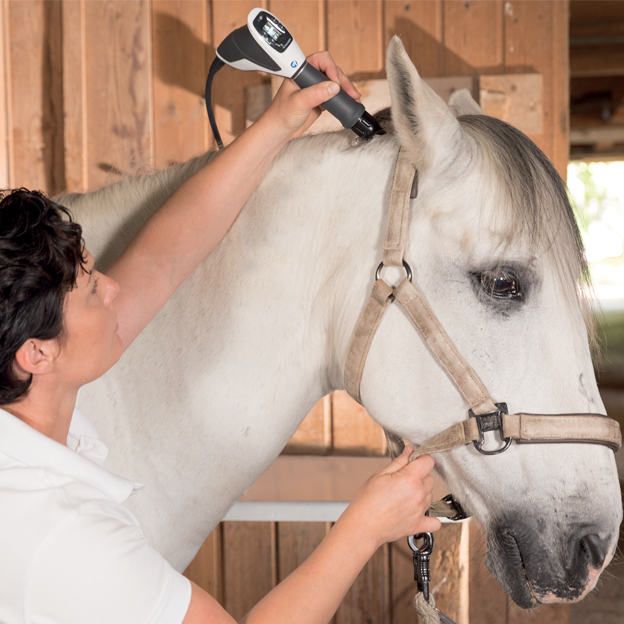The Power of Equine Therapy for Anxiousness, PTSD, and Emotional Healing
The Power of Equine Therapy for Anxiousness, PTSD, and Emotional Healing
Blog Article
Reviewing the Efficiency of Laser Treatment in Equine Therapy for Injury Recovery
The evaluation of laser therapy's effectiveness in equine injury rehabilitation depends upon several factors, including recuperation time, pain mitigation, and cells regeneration. Scientific studies suggest significant enhancements in conditions like tendonitis and osteoarthritis, credited to improved mobile feature and raised ATP production. Veterinarians often observe superior outcomes with laser therapy contrasted to standard approaches, positioning it as a crucial aspect in equine care. The necessity for constant surveillance and customized therapy strategies can not be overstated. What details scientific evidence sustains these insurance claims, and just how do veterinarians implement these protocols in technique?
Understanding Laser Treatment
Laser therapy has come to be a pivotal device in vet medicine, specifically in the therapy of equine problems. Recognized for its non-invasive nature and efficacy, laser treatment entails the application of details wavelengths of light to promote tissue repair work and reduce swelling. This healing technique is increasingly preferred for its capacity to increase the recovery procedure in horses experiencing a selection of musculoskeletal injuries and chronic problems.
The key device behind laser therapy is its ability to boost mobile features. Furthermore, laser treatment advertises vasodilation, improving blood flow and oxygen delivery to broken tissues, therefore quickening recuperation.
In equine medication, laser therapy is specifically helpful for conditions such as tendonitis, osteo arthritis, and wound healing. The method is admired for its pain-relieving residential or commercial properties, permitting steeds to regain mobility and feature a lot more rapidly. Vets likewise appreciate its marginal negative effects compared to various other treatment modalities, making it a reliable and risk-free option for equine treatment.

How Laser Treatment Works

Upon absorption, these photons cause a series of biochemical adjustments, improving mitochondrial feature and leading to boosted adenosine triphosphate (ATP) production. This increase in ATP accelerates cellular metabolism, advertising tissue fixing and regrowth. Additionally, laser therapy modulates inflammatory reactions by influencing cytokine levels and lowering oxidative stress, consequently relieving discomfort and swelling.
Another substantial facet of laser therapy is its role in improving microcirculation. The treatment promotes vasodilation, enhancing blood flow and oxygen distribution to broken tissues (Equine Therapy). This helps with the removal of cellular debris and sustains the proliferation of fibroblasts and collagen synthesis, crucial for injury healing
Scientific Evidence
The efficiency of laser therapy in equine therapy has actually been substantiated with different clinical research studies, showcasing its healing possible across a range of conditions. A research carried out by Turner et al. (2012) showed that steeds treated with low-level laser treatment (LLLT) for ligament injuries displayed accelerated healing contrasted to those receiving standard therapies.
In a similar way, research study by Johnson and associates (2015) focused informative post on equine muscular tissue injuries, revealing that laser treatment dramatically expedited muscle fiber regeneration and decreased muscular tissue stiffness. These searchings for were affirmed by histological analyses revealing enhanced muscle cells company. Scientific evaluations have actually revealed that laser treatment can alleviate chronic problems such as osteoarthritis. A research by Smith et al. (2018) reported that horses with osteoarthritic joints experienced notable pain alleviation and enhanced variety of motion complying with a program of laser therapy sessions.
Vet Insights

Veterinarians also appreciate the adaptability of laser therapy. It can be utilized for you could try this out a vast array of conditions, from superficial wounds to deeper musculoskeletal injuries. Dr. Emily Brown highlights its energy in treating conditions like tendonitis and osteoarthritis, where conventional treatments frequently fail. She mentions that laser therapy can be tailored to the specific needs of each horse, ensuring optimum end results.
Furthermore, veterinarians value the ability to incorporate laser treatment with other therapy modalities. This multimodal strategy can boost overall therapy efficacy, supplying a detailed remedy for equine rehab. Such recommendations from skilled specialists emphasize the expanding approval and application of laser treatment in equine medication.
Practical Considerations
An essential facet of implementing laser therapy in equine treatment includes recognizing the functional considerations that guarantee its efficacy and safety. It is crucial to select the suitable laser device, as numerous types vary in wavelength, power, and infiltration depth. Vets must be well-versed in these specifications to tailor treatment protocols successfully per injury kind
Additionally, the frequency and duration of laser therapy sessions need mindful preparation to optimize restorative benefits while minimizing any type of prospective negative impacts. Consistent tracking of the steed's reaction navigate to these guys to treatment can lead required adjustments in the treatment routine. Establishing a safe and regulated setting throughout therapies is also vital to prevent unintended exposure to laser emissions, which can hurt both the steed and the trainer.
Training and qualification of employees providing laser treatment are paramount to make sure proper method and to maintain safety standards. In addition, keeping accurate documents of each session, including laser settings and observed end results, is essential for evaluating the total efficiency of the therapy and for making data-driven decisions.
Conclusion
Laser treatment has arised as a reliable technique in equine injury recovery, using significant benefits in recovery time, pain alleviation, and cells healing. For optimum results, constant tracking and customized treatment procedures continue to be crucial in leveraging the full potential of laser therapy in equine care.
Report this page